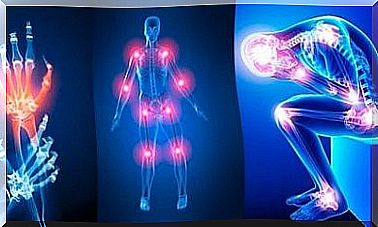Top 4 Most Common Cerebrovascular Diseases

Do you know what are the most common cerebrovascular diseases and what characterizes them? Cerebrovascular diseases refer to all conditions in which the blood circulation in a certain part of the brain is temporarily or permanently interrupted.
We all know or have heard of a person who has suffered an aneurysm or a stroke. These diseases can have permanent effects or can even be fatal. In any case, these conditions are frightening and should lead us to take more care of ourselves and improve our daily habits.
However, many people do not have enough information about cerebrovascular disease. If you haven’t had these problems yourself or you don’t have anyone in your family or circle of friends who has been affected by them, you probably don’t understand the impact of certain factors on brain health. These include high blood pressure, high cholesterol and obesity.
Every year, there are many deaths caused by preventable cerebrovascular diseases. Others, however, such as strokes that affect young and healthy people, are sad realities that defy any logic and reason.
However, it is important to know what are the most common cerebrovascular diseases, as well as the factors that can reduce their impact on your life. It is worth taking a little of your time to find out more important information about these conditions.
Top four most common cerebrovascular diseases
As mentioned at the beginning of the article, cerebrovascular disease is characterized by interruption of blood flow to the brain. Any circulatory problem can cause two types of diseases: ischemic and hemorrhagic.
Ischemic disorders are undoubtedly the most common and usually have the same “source” in all individuals: atherosclerosis. This disease occurs when the patient has high cholesterol, accompanied by inflammation of the arteries in the brain. Thus, a slow, progressive and very debilitating disease develops: the accumulation of atheromatous plaques in the blood vessels.
Atherosclerosis makes circulation difficult in the brain, eventually causing cognitive problems and even dementia. As you can see, we are talking about a severe condition that we should not ignore. Preventive measures and healthy habits are very important to protect us against it.

1. Cerebral thrombosis
- Thrombosis is an ischemic stroke.
- In fact, in 80% of cases, the strokes have the same origin.
- These occur when the cerebral arteries narrow as a result of blocked blood flow – the formation of a thrombus (blood clot).
Cerebral thrombosis sends a few warning signals before the cerebral arteries become completely blocked. That is why it is vital to pay attention to the following symptoms:
- Numbness or tingling on one side of the body
- Severe headaches
- Difficulties in communication or understanding
- Dizziness and difficulty walking
- Sight problems
2. Cerebral embolism

Cerebral embolism is still one of the most common ischemic cerebrovascular diseases. This time, the cause is not the thrombus, but a detached plaque. Specifically, the thrombus is a blood clot that forms on the wall of an important artery and hinders blood circulation. Cerebral embolism is caused by a piece of plaque that detaches from an arterial wall and reaches the brain.
Unlike cerebral thrombosis, plaque can come off far from where the obstruction occurred, ie generally near the heart.
The symptoms of an embolism are similar to those of thrombosis: numbness on one side of the body and difficulties in expression and communication.
If the patient with a cerebral embolism is treated quickly, the doctor will give him a medicine called tPA (tissue plasminogen activator) which can dissolve the plaque. If the treatment works, life expectancy increases considerably.
3. Cerebral or intracerebral hemorrhage
We have already discussed two of the most common ischemic cerebrovascular diseases. Now we present to you the ailments caused by hemorrhages. The most common is an aneurysm. In this case, it is an abnormal dilation of a weakened part of a blood vessel in the brain.
- When the aneurysm ruptures, a cerebral hemorrhage occurs.
- Despite the impact of an aneurysm, ischemic strokes are the most serious and cause more deaths each year.
The problem is that the aneurysm does not show many symptoms. Some people have a dilated blood vessel in the brain for years, without realizing it, until, under pressure at a certain point, it breaks.
4. Subarachnoid hemorrhage

Subarachnoid hemorrhages occur as a result of high blood pressure, a problem that must be kept under control. In this case, a blood vessel located on the surface of the brain breaks.
The rupture occurs in the space between the brain and the scalp, but does not enter the brain. Life expectancy following this accident depends on the promptness of the medical intervention.
It is very important to recognize the symptoms of subarachnoid hemorrhage:
- Difficulty concentrating
- Discomfort in bright light
- Irritability, bad mood, personality changes
- Cervical and shoulder pain
- Vomiting and dizziness
- Convulsive seizures
The clearest symptoms are related. You may lose your sight for a few minutes or see very bright lights or other optical phenomena.
If you notice that you have a minor problem or abnormality, we advise you to trust your instincts and seek medical help immediately.









